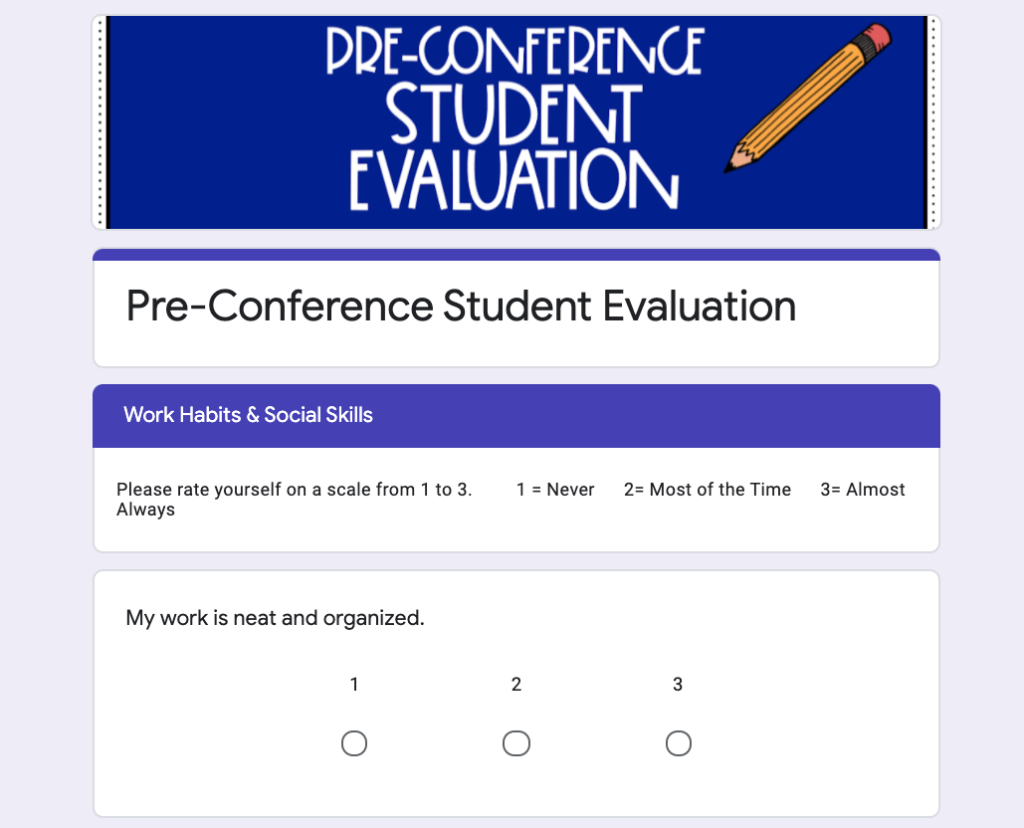Student self-assessment became invaluable to me as a teacher very early on. We implemented the 1 – 4 system and I used it many times each day. Often it was a quick head down, hand up. “On a scale from 1 (even with help I’m not getting it) to 4 (I could teach the class I understand this so well), how do you feel about the topic we learned today?” Other times it was more formal at the bottom of a quiz or on an exit slip.

Self-assessment and reflection became a sacred ritual in my class. I expected honest and thoughtful reflection, and my students expected their answers to be private and to elicit a meaningful response from me as their teacher.
Over time, self-assessment and reflection became a sacred ritual in my class. I expected honest and thoughtful reflection, and my students expected their answers to be private and to elicit a meaningful response from me as their teacher. Student self-assessment guided my instruction, my assessment, and often my curriculum.
What is Student Self-Assessment?
Student self-assessment is providing students with safe and consistent ways to reflect on their mastery of a topic. The process is easily adapted. It can be short and quick (like the hands up method I mentioned in the intro) or more formal and in-depth (like a questionnaire given before report cards).
It promotes student-centered learning, increases accountability and engagement, and helps students develop their critical thinking. As a teacher, student self-assessment is invaluable, because it quickly alerts me to students who need intervention or enrichment.
Research shows that students who regularly self-assess are more likely to attribute their academic success to their own hard work, rather than to luck or another outside influence.
This digital learning adventure has made us have to think a little more outside the box as teachers. How do we offer students a variety of opportunities for self-assessment when we aren’t with them in class classroom? How do we instill reflection as an essential part of learning?
How to Collect Student Self-Assessment Data Remotely.
Before you begin asking students to self-assess, it’s important to set up a clear rating system and to give students examples of each. In my classroom we use a 1 – 4 system.
- 1: Even with help I don’t understand.
- 2: I’m beginning to understand, but need more help/time.
- 3: I understand. I’m able to do almost all of this work without help.
- 4: I fully understand. I could teach others and/or would like more of a challenge.
It will take time to get to a point where your students are consistently delivering strong self-assessments, but with time, guidance and a strong classroom community, you’ll be amazed at how straightforward your students will be.
There is a great Edutopia article about how to prepare students for meaningful self-assessment here.
Quick and Easy Self-Assessment Ideas
Add a feedback slide to the end of your digital assignments.
This is easy to implement once you’ve created a template. Import your slide to the end of all of your assignments. Allow a place for students to rate their mastery and mark if they need extra help.

Add a self-rating question to the bottom of all your assessments.
This is another low effort method of collecting student assessment. Get students used to seeing this question at the end of their formative assessment and assignments.
For an extra quick and easy approach, create a picture that can easily be uploaded into Google Forms with a sliding response scale.
For more information about linking feedback to slides click here.

Ask for digital exit slips/emails.
These digital exit tickets are so informative. We call them a quick-checks. I create them in Google Forms and they usually contain 3 – 4 questions. At the end, I always create a spot for quick self-assessment.
Email is another great way to do this! Ask a question and require students to email their answers and a quick rating of their mastery. You now have two data factors to inform your instruction. – their answers to the questions, and their learning reflection.
Send a survey.
This is more in-depth and would be best suited at the end of a unit or grading period. You can send a survey via email, or collect information quickly with a Google Form. Before report cards come out, I like to have students rate their learning AND their behavior. We often conference 1-on-1 about these answers. This data is also incredibly helpful before meeting with parents.

Hold virtual meetings or conferences.
It doesn’t have to be all paperwork. Check-in with your students with virtual meetings or conferences. Set goals with students and work with them on plans to meet those goals. Show students their learning data and ask them to reflect on their scores as well. This is a great time to offer feedback and to connect.
Self-Assessment Tips
In order for your students to complete meaningful assessments, it’s important that they don’t feel penalized or embarrassed if they give themselves a low rating. Assigning extra “busy work” or publicly exposing student answers insures that you won’t get honest feedback from that student again. Instead, use this information to guide you on assigning groups, differentiated assignments, or just to know who to check-in with. Did a student give themselves a high rating? Great! Work with them on enrichment work or assign work that is more challenging – don’t just pile on the problems.
The most important rule of showing your students that you respect their assessment is to actually use it. They’ll catch on to the fact that they asked for help or a challenge and you ignored or didn’t see it. It’s an amazing tool to inform your instruction – embrace it!
Leave a Reply
You must be logged in to post a comment.